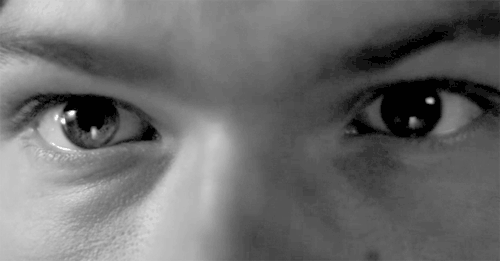http://www.ncbi.nlm.nih.gov/pmc/articles/PMC3612940/ [h=2]Abstract[/h] Pupil diameter was monitored during picture viewing to assess effects of hedonic valence and emotional arousal on pupillary responses. Autonomic activity (heart rate and skin conductance) was concurrently measured to determine whether pupillary changes are mediated by parasympathetic or sympathetic activation. Following an initial light reflex, pupillary changes were larger when viewing emotionally arousing pictures, regardless of whether these were pleasant or unpleasant. Pupillary changes during picture viewing covaried with skin conductance change, supporting the interpretation that sympathetic nervous systemactivity modulates these changes in the context of affective picture viewing. Taken together, the data provide strong support for the hypothesis that the pupil’s response during affective picture viewing reflects emotional arousal associated with increased sympathetic activity.
Descriptors: Pupil, Arousal, Emotion, Pleasure, Sympathetic, Skin conductance
Hess (e.g.,
Hess & Polt, 1960) famously reported bi-directional effects of emotion on pupil change, reporting that the pupil constricted (shut down) when people viewed unpleasant pictures and dilated when they viewed pleasant pictures. These results proved difficult to replicate, however, and this early research suffered from numerous methodological difficulties, including the use of very few pictures (e.g., five), very small number of subjects (e.g., five), the method of assessing pupil change, and no statistical analysis.
Libby, Lacey, and Lacey (1973) later conducted amore extensive investigation of pupillary changes during affective picture viewing, presenting 30 pictures to 34 participants while both pupil diameter and heart rate were measured. In their study, the pupil was photographed two times a second during a 15-s exposure for each picture. Then, “six clerks†scored the resulting 81,600 measurements on the basis of a wall chart onto which the negative was projected. The reported results were somewhat confusing: Although “attention-getting†pictures, a factor onto which emotionality loaded, was associated with greater pupil dilation, a second “pleasure†factor suggested that neutral pictures prompted larger pupil dilation than emotional pictures.
More recent data have suggested that emotional arousal is a key element inmodulating the pupil’s response. For instance, in a poster abstract,
Steinhauer, Boller, Zubin, and Pearlman (1983) describe data in which pupil diameter increased when people viewed pleasant and unpleasant pictures, and, more recently,
Aboyoun and Dabbs (1998) presented pictures of clothed and naked individuals to men and women, finding that pupil dilation reflected general, rather than gender-specific, arousal. Nonetheless, a systematic comparison of pupillary reactions as a function of picture emotionality, and the role of emotional arousal in modulating pupillary changes, does not yet exist. One goal of the current study was to reassess the effects of hedonic valence and arousal on pupillary responses during picture viewing using a modern infrared eye-tracking system and a large set of well-validated pictures from the International Affective Picture System (IAPS;
Lang, Bradley & Cuthbert, 2005), which allowed experimental control of both rated pleasure and arousal.
A second goal of the current study was to assess the contribution of sympathetic and parasympathetic activity to pupil change in the affective picture viewing context. As discussed more fully by
Steinhauer, Siegle, Condray, and Pless (2004), changes in pupil diameter are controlled by two muscles—the dilator and the sphincter—that are differentially influenced by activity in the sympathetic and parasympathetic branches of the nervous system. Increased sympathetic activity
increases the activity of the dilator muscle, prompting dilation, whereas inhibition of parasympathetic activity lessens constriction of the sphinctermuscle, which also results in dilation. Thus, increases in pupillary diameter can be mediated by activity in either division of the autonomic nervous system.
In the picture viewing context, previous studies have consistently found that skin conductance changes are larger when viewing pleasant and unpleasant, compared to neutral, pictures, indicating that this sympathetically mediated response covaries with emotional arousal (
Lang, Greenwald, Bradley, & Hamm, 1993). On the other hand, cardiac deceleration is generally greater when viewing unpleasant, compared to either pleasant or neutral, pictures (
Bradley, Codispoti, Cuthbert, & Lang, 2001), and pharmacological blockade studies of fear bradycardia in animals suggest that this deceleratory activity is mediated primarily by changes in parasympathetic activity (
Berntson, Boysen, Bauer, & Torello, 1989).
If pupillary changes during picture viewing are mediated by differences in parasympathetic activity, we expected that the pattern of pupillary changes would covary with the pattern of cardiac deceleration and be most pronounced for unpleasant pictures. If, on the other hand, pupillary changes during picture viewing are initiated by sympathetically mediated changes that increase activity of the dilator muscle, we expected that papillary responses would covary with skin conductance activity, with increases in both measures when viewing emotionally arousing compared to neutral pictures, regardless of hedonic valence.
The most important natural function of the pupil is to dynamically respond to changes in environmental illumination, and, in humans, the pupil reflexively responds to such changes with an initial constriction (i.e., the light reflex) that is related to stimulus luminosity (
Beatty & Lucero-Wagoner, 2000). Because the human eye is differentially sensitive to light in the green, red, and blue spectrums (making it more difficult to accurately estimate luminance for color photographs), we presented pictures in grayscale. Moreover, we controlled luminance by equating both the average luminance across images in each set of pictures (i.e., pleasant, neutral, and unpleasant) as well as by equating the distribution of luminance values in each picture set. We expected that, although the magnitude of the initial light reflex would covary with luminance, it would not systematically differ as a function of hedonic picture content, allowing an accurate assessment of pupil change that is specifically related to picture emotionality.
<Cont. at source>





